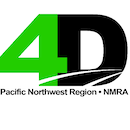Grab Iron Posts
January Tacoma Virtual Clinic
By Kevin Klettke
Please join us on Thursday, January 14th for the Tacoma Group Virtual Clinic. Greg Price will be showing us how he constructs asphalt roads. Everyone is invited to share their projects they have been working on. Hope to see you online!
Zoom meeting:
Topic: Tacoma Clinic for January 2021
Time: Jan 14, 2021 07:00 PM Pacific Time (US and Canada)
Join Zoom Meeting:
https://us02web.zoom.us/j/83356681575?pwd=bjVoRk5PaVdXMHlMM0dQcXNhdllwQT09
Meeting ID: 833 5668 1575
Passcode: 556902
Kevin Klettke
Whidbey Virtual Clinic – Rubber Rocks, a Better Alternative? (or at least another one) – 10 February 7:00PM
Rich Thom will be presenting our February clinic on the use of rubber rocks (not molds) which is very different that traditional scenery methods. (This is a re-do from last month where we needed to cancel due to wind storm induced power outages on wonderful Whidbey Island) Here is his newsletter description of the clinic:
Five years ago I presented a mini-clinic to the Skagit Valley & Whidbey clinic group about my initial trials of rubber rocks for scenicking my HO-scale Coldwater Creek & Cascade Railroad. I had purchased enough of the “rocks” to complete about one-third of my terrain. Compared with my past experience with conventional plaster castings, the rubber rocks were entirely different and presented a steep learning curve.
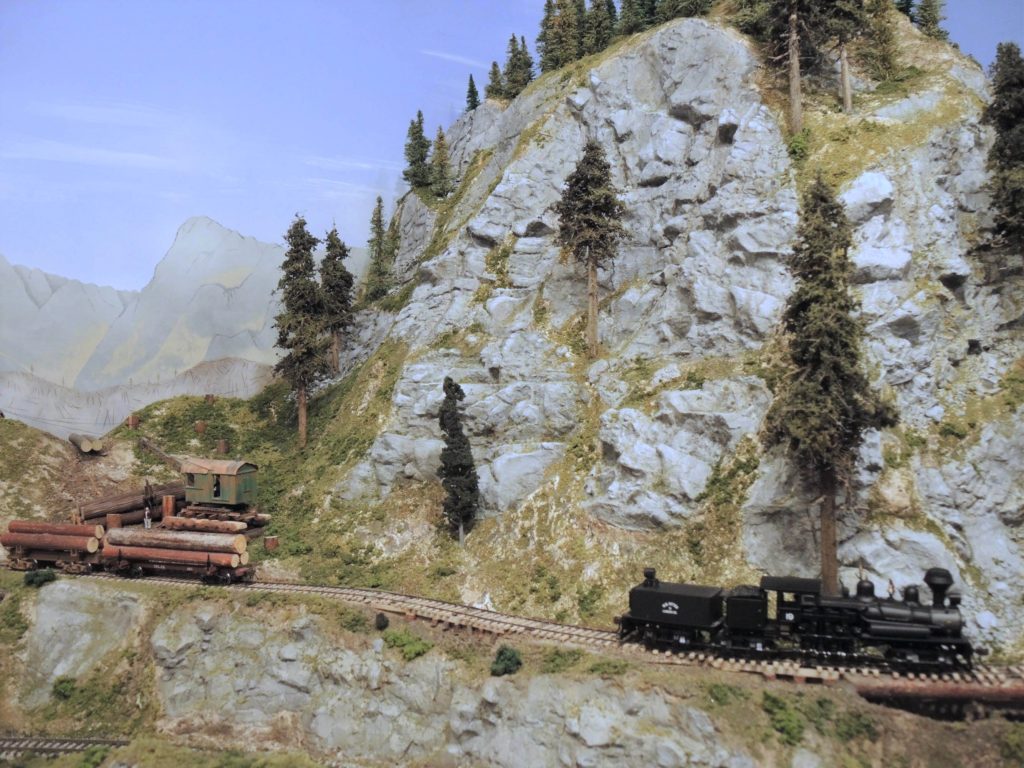
I was pleased with the first results (see photo) and decided to use the product—from Cripplebush Valley Models (www.cripplebush.net) –to complete the layout. In this updated clinic I will cover how I trimmed the rocks to size; attached them to my hardshell (itself different from what most modelers use); and most critically, colored them. I found coloring to be the biggest challenge and departure from staining plaster castings. I’ll conclude with a comparison of advantages and disadvantages, and if you tune in, you can decide for yourself whether rubber rocks are a better alternative—or not!
ZOOM LINK BELOW:
4dpnrOrganizer SkagitValleyWhidbey is inviting you to a scheduled Zoom meeting.
Topic: NMRA PNR 4D Whidbey Clinic
Time: Feb 10, 2021 07:00 PM Pacific Time (US and Canada)
Join Zoom Meeting
https://zoom.us/j/94937323423?pwd=OUZTSVZnb3RxdU4vQTdkS1dnaGVvZz09
Meeting ID: 949 3732 3423
Passcode: 860260
Meeting will be open around 6:30PM for chit chat before the presentation. See you there!
Virtual Layout Tours Saturday Jan. 9 @ 10:00am
Tune in on Saturday morning, Jan 9, at 10:00am for two more virtual layout tours, brought to you by the Fourth Division of the National Model Railroad Association (4DPNR). First will be Gary Jordan, who has an interesting O scale layout in Mukilteo of the Gilpin Tram that includes interchanges between three different gages of track and some innovative operational ideas on keeping track of loads and empties. Second will be Bruce Hendrick from LA with a tour of his HO club’s layout representing SP operations (the Corona Model Railroad Society. Both tours will even include video of moving trains! The Zoom info to join the meeting is below:
Topic: 4DPNR Layout Tour – Gary Jordan (O) & Bruce Hendrick (HO)
Time: Jan 9, 2021 10:00 AM Pacific Time (US and Canada)
Join Zoom Meeting
https://us02web.zoom.us/j/85479739925?pwd=SnIwT0RjQ0hhazdueHlTMVZVMG1Ldz09
Meeting ID: 854 7973 9925
Passcode: 479007
One tap mobile
+12532158782,,85479739925# US (Tacoma)
+16699009128,,85479739925# US (San Jose)
Dial by your location
+1 253 215 8782 US (Tacoma)
+1 669 900 9128 US (San Jose)
+1 346 248 7799 US (Houston)
+1 312 626 6799 US (Chicago)
+1 646 558 8656 US (New York)
+1 301 715 8592 US (Washington D.C)
Meeting ID: 854 7973 9925
North End Clinic Cancelled for January
I apologize for the late notice but the North End Clinic that was scheduled for this Thursday, January 7, at 7:00pm has been cancelled.
We will be back in action at our regular time/day next month (Thursday, February, 4 at 7:00pm via Zoom).
Happy New Year & see you in February!
Lisa Murray
northseattle_organizer@4dpnr.com
Skagit Valley & Whidbey January 2021 Newsletter
Click here to read the January 2021 issue of The Skagit Valley & Whidbey Clinic Newsletter.
Bremerton Northern January 2021 Flimsy
Click here to read the January 2021 issue of The Flimsy Board from the Bremerton Northern Model Railroad club.
O Gauge Layout At The Snoqualmie Valley Railway
Article & Photos By Ed Ives
A request in the Grab Iron called for restoration of an O gauge layout at the Northwest Railway Museum in Snoqualmie, obviously a golden opportunity for the Hi Rail modular group to take action. The layout had formally been in the now defunct Bellingham Railroad Museum and would be resurrected in Snoqualmie. The Hi Railer’s would take on this task.
Contact with Emily Boersma the Museum volunteer coordinator was made to schedule a visit Friday November 20th for a quick assessment of the task at hand. Removing and relocating model railroad layouts might be done in one piece, unlikely, or with a chainsaw, more than likely. Emily advised that the Museum was looking at reopening on December 14th, pandemic allowing and would like the layout up and running by then. Friday came and the visit revealed a layout in essentially one piece, comprising three tracks and needing something like a modular set up at a show. We were advised that running on one of the tracks was never reliable and needs to be fixed. Yes, we can do this no problem. Hum, yes we hope so?
The first work session was scheduled for Tuesday November 24th where the team set about sorting all the tote boxes under the layout into trains, accessories and electrics. A quick look at the locomotives revealed that the mechanisms were dry as a bone and appear to have never been lubricated. A look under the layout revealed a spider work of wiring that was literally cut out to aid transportation, no color coding and any one’s guess as to which goes where. The easiest solution is to rewire, not something we normally do on a show set up. Lubricating locomotives and stock ensued, new color coded power feeders were added to two of the tracks. Soon we were testing locomotives and track. A good percentage of the locomotives needed something more than lubrication, one, a nice Great Northern electric on test made it part way round the layout before stopping in a cloud of smoke. Not good. Well not as bad as it could be as a light bracket in the locomotive decided at that moment to fail shorting out on the frame thus frying the wire. Cut off the wire and the locomotive runs fine but is without a working headlight.
In discussion with Richard Anderson, the museum director, he wished that by the 14th we have all three tracks in full reliable operation, all accessories working. As he said, he would like to see light and action. There is no evidence of previous automatic operation of signals nor barrier crossings and it would appear such operation would be desirable in the future. It was decided that this feature would be put on the back burner and handled in the New Year after everything else is fixed and operational.
December 1st was the next work session. Having gone through all the locomotives, lubricated all, repaired some and others put away for a more extensive overhaul. We moved on to the accessories to check them out, each showing evidence of extensive use. The lower inside track had been glued in place but about a six foot stretch had come adrift. The loose track was screwed down. The track was cleaned as best we could considering there are two tunnels on the line where the track is inaccessible within. Our first attempt to run a train on this track had the locomotive enter the tunnel at full gallop and derail out of sight and out of reach. Consistent running was finally accomplished by all locomotives on all tracks except for Thomas the tank. The wheel bearings on his passenger cars were so worn, through lack of lubrication, that the wheel flanges were scraping on the underside of the car floor. The drag of these cars causing Thomas to derail on the corners. The Museum did not consider they wished to buy new cars as would be reasonable. We offered to take these cars away to see if we could accomplish a repair as they are less than useless otherwise.
December 4th revealed the Thomas passenger cars with new brass bearings replacing those original Lionel plastic ones. Thomas now runs fine. GREAT!!!! The rest of the day was devoted to powering the lights, accessories and compiling a list of spare parts required.
December 8th and in what we thought would be the final day of work before the 14th taking our stock of new light bulbs and parts for repair of ailing accessories. Work was progressing in fine order even to a bit of beauty treatment to the scenery when Richard dropped by with the disheartening news of an extension of the lock down to January 4th and that the museum would remain closed through then. Not a huge surprise but obviously a hit to the museum with lost revenue during the holiday season. A quick assessment of our ‘plan’ showed that a revision was needed, we cannot justify delaying automation of the accessories until January and in reality that should be accomplished prior to Christmas. The rest of the work session was devoted to testing the signals as well as the barrier crossings for operation. As with most other parts of this layout few worked as is and by the end of the day by a means of cannibalization the three required functional barrier crossings were made out of seven nonfunctional ones. Neither of the signals were functional and both needed new components to make functional. It is doubtful that we can source parts locally considering these signals are at least 50 years old. Where is the Boeing swap meet when you need it?
December 11th, the final day and big push to put this program to bed with four members working on the layout; two servicing reluctant accessories; one under the layout wiring for the barrier crossings; one doing the final scenery touch ups and all tidying up around the layout. One of our members raided his home layout for a couple of color light signals set for automatic block operation that he donated to the project. These were added to the layout in the final minutes of the session. We have now been made official museum volunteers and need to sign in and sign out. A little training session will be required for other museum volunteers in how to operate the layout; put it to bed at the end of the day and awaken it in the mornings.
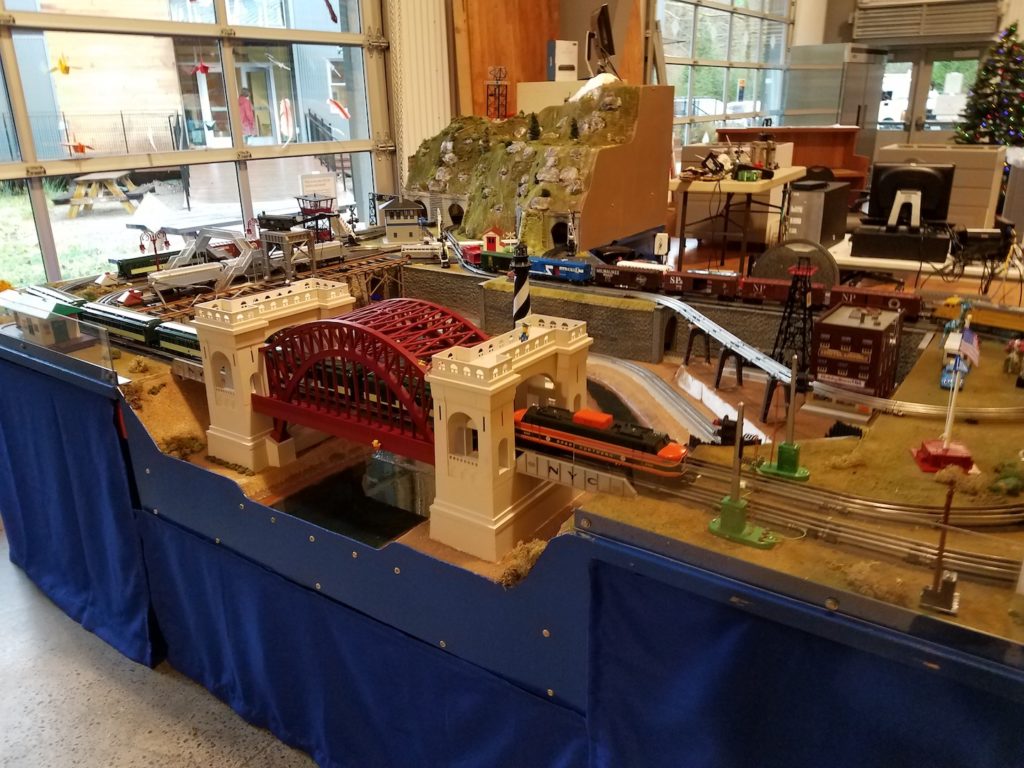
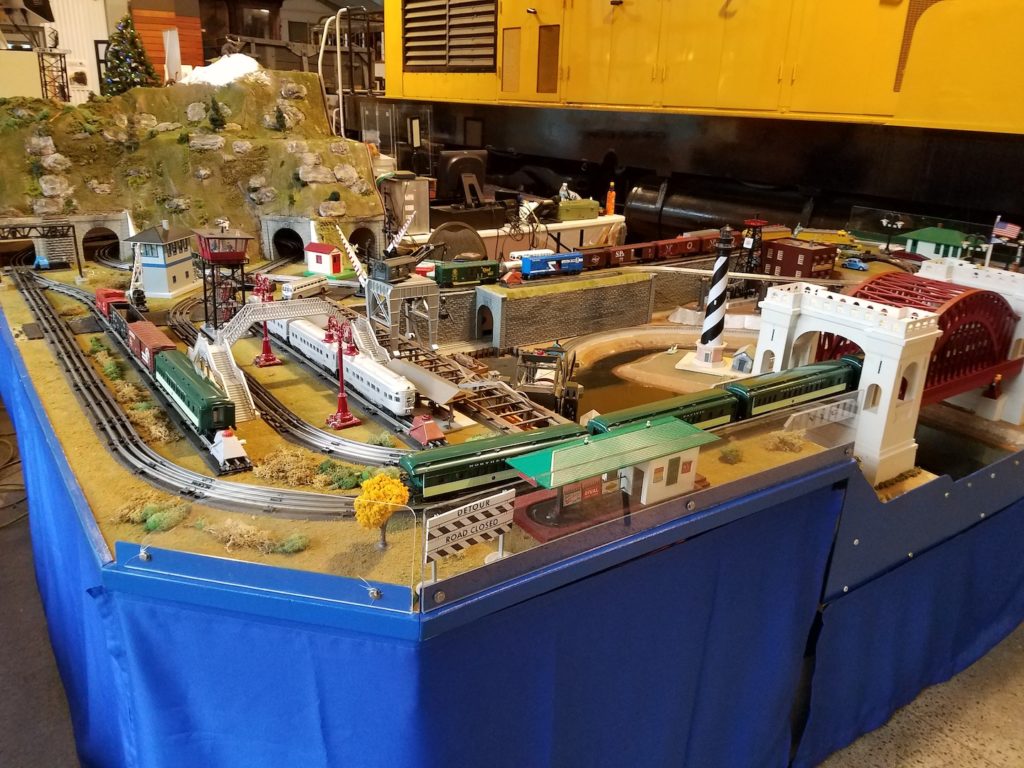
Overall it was nice meeting and working with Emily and Richard; good to work on a layout again and not quite like a set up at a train show. It was a learning experience especially in automation that we might add to our modular layouts. On the negative side if there was one, the floor of the building was darned cold and hard.
Ed Ives
David Yadock’s Dry Gulch & Western Railroad – Part 10
Article & Photos By David Yadock
Dry Gulch & Western, A Photo Series Part 10
We are almost at the end of my photo layout tour. For those of you that haven’t been following along with this series, the Dry Gulch & Western is a mountain railroad that follows some of John Allen’s famous Gorre & Daphetid layout. My layout is not an exact copy, nor did I want it to be an exact copy. It is more of an “adjusted” track plan. My layout follows the basic idea of John Allen’s by using a double loop with each loop folded over each other. That allows for a really long mainline with a minimal use of space. Most of the same scenery areas are used twice by having the mainline pass through it at different elevations or in tunnels. Doing this allows trains to travel more distance between towns. In the grand scheme of things, the mainline goes around the room a total of four times. I have kept a lot of the key elements that were on John’s layout but have modified them to give them my personal touch.
I still have a lot of scenery to complete and many other details to add. Since I am the only person working on the layout, I try to work on it each day, even if I just have 5-10 minutes available. I also try to work on several different projects at the same time. This helps those projects get done faster. While some paint is drying on one thing, or some glue is setting on another I can switch over to still another project to move it along to completion. I always have 3-4 ongoing projects in various stages of completion. Once a building or other item is completed, I immediately begin another project. If there are small gaps of time available, I can easily grab a freight car and weather it in about 5 minutes.
One thing I have found is that basic scenery on a layout can move very quickly over a large area but towns and cities with their various buildings take way more time to complete. When I get to a town on the layout, I start building the key structure(s) of the town. This can be done even way before the scenery ever reaches the town. I have done this with almost all my cities and towns on the layout. Let’s move on with the tour.
Photo 46 shows one of the key features of the layout. In this photo you see two different bridges spanning a steep canyon. At the base of this canyon is a narrow-gauge line and to the left is a standard gauge mainline. This photo shows my curved bottom chord bridge spanning that deep valley, it carries the mainline into Allentown. Trains that travel on this bridge can go directly into Allentown and then on to Tallyn Pass or can glide across the layout room entryway into South Allentown. The other bridge also carries the same mainline but can be used as a bypass to go directly to Tallyn Pass. This photo shows how one scene is used twice by the same mainline trackage.
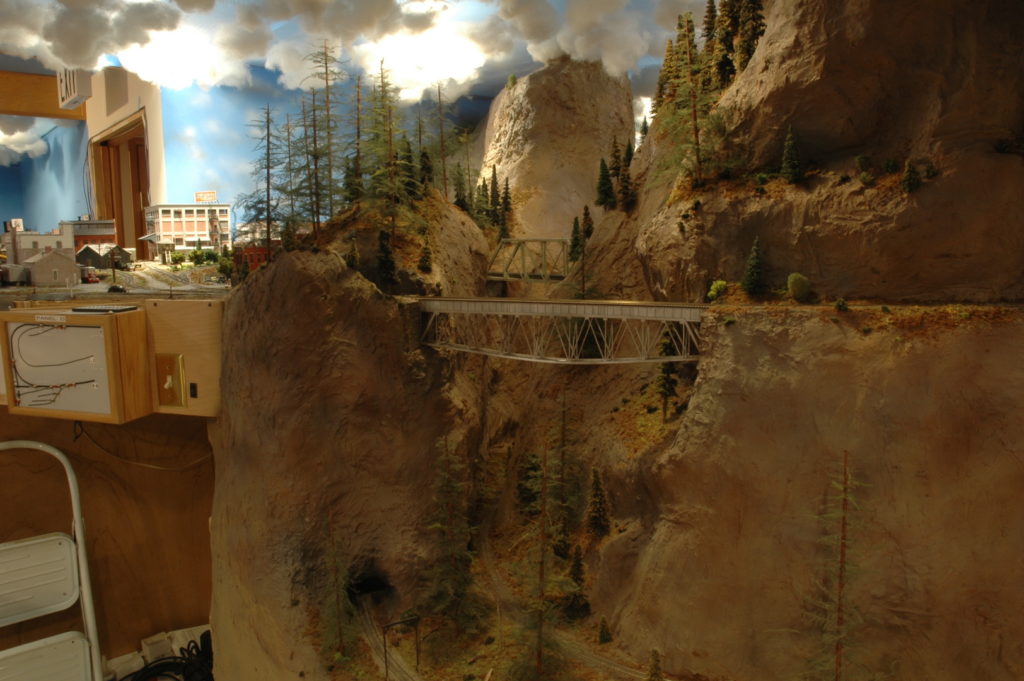
Photo 47 pans further to the left to allow you to view the aisle, Allentown, and even part of South Allentown. Please note the hill to the right with the tall timber trees covering it. That hill acts as a critical view block and divider between wilderness and the city. Also, in this photo on the extreme left you get a view of Newport yard.

Photo 48 is a closer view of Allentown. Buildings are a mixture of kits, scratch-built, and kit-bashed structures. All of them have interiors and lighting. This was the first town I completed on the layout and is set on a slight slope. Elevation from the front to the back rises about 1-1.5 inches. Yes, the sidings are not level, yet the cars placed on them do not roll away! What type of sorcery happens on this portion of the layout??? Any guesses? This area also features a wye to allow locomotives to be turned if needed.
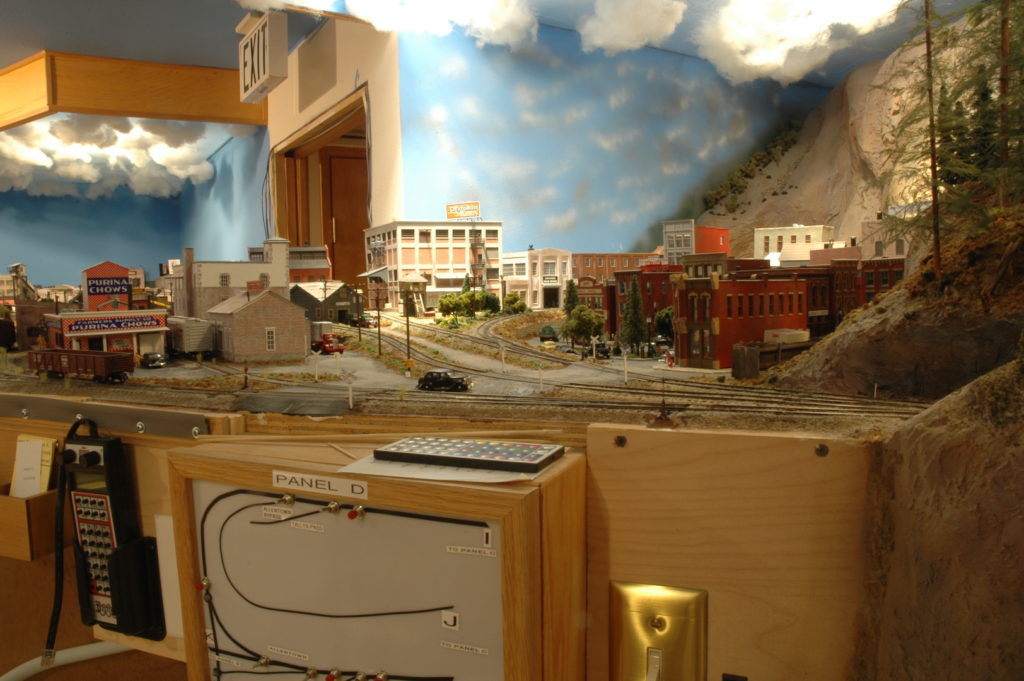
Photo 49 gives you a view looking through the trees down that canyon from photo 46. In this view you would be just about standing on that curved bottom chord bridge. Again, through those trees and in the distance, you can see the water tower at Tallyn Pass. The station is just to the right of the water tower. Tallyn Pass is about 8 actual feet away in this picture and a very long tunnel gets you there from Allentown.
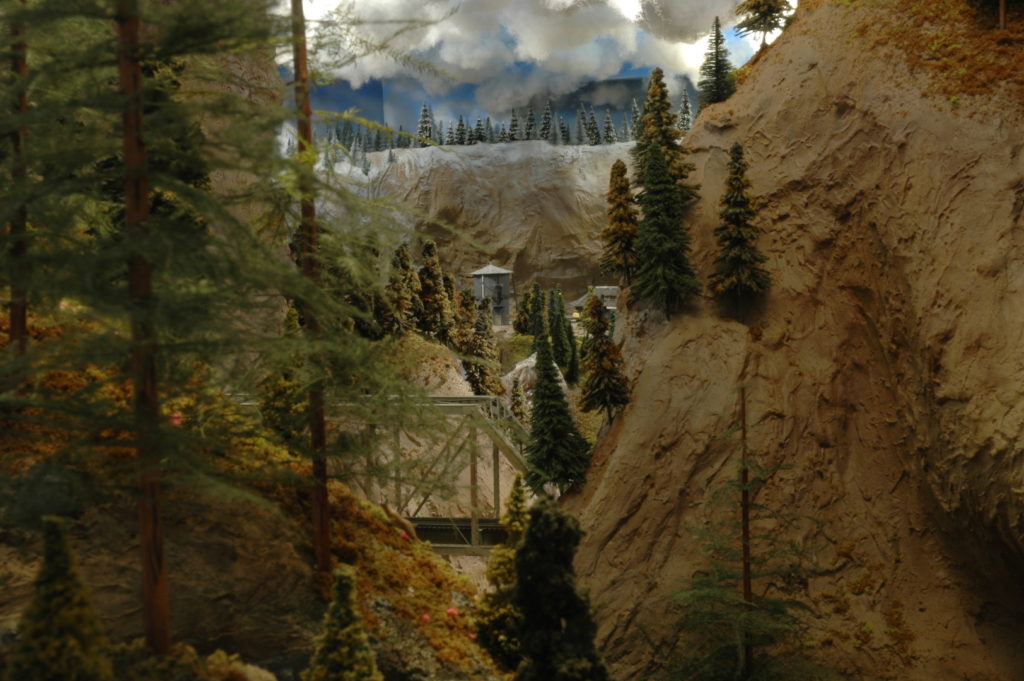
Photo 50 gives a nice view of downtown Allentown. This town does not have a passenger station, only a freight house. It does have a small passenger shed located by the freight house. The giant mountain directly behind the buildings acts as a view block. See how that other small hill with those tall timber trees acts as a view block to the other portion of the layout. Allentown has a lot of operational action in a very small amount of space. The wye has businesses located on it and there are 3 sidings with additional businesses. This and South Allentown are the driving force to get trains over the mountains from Newport and Ellison.
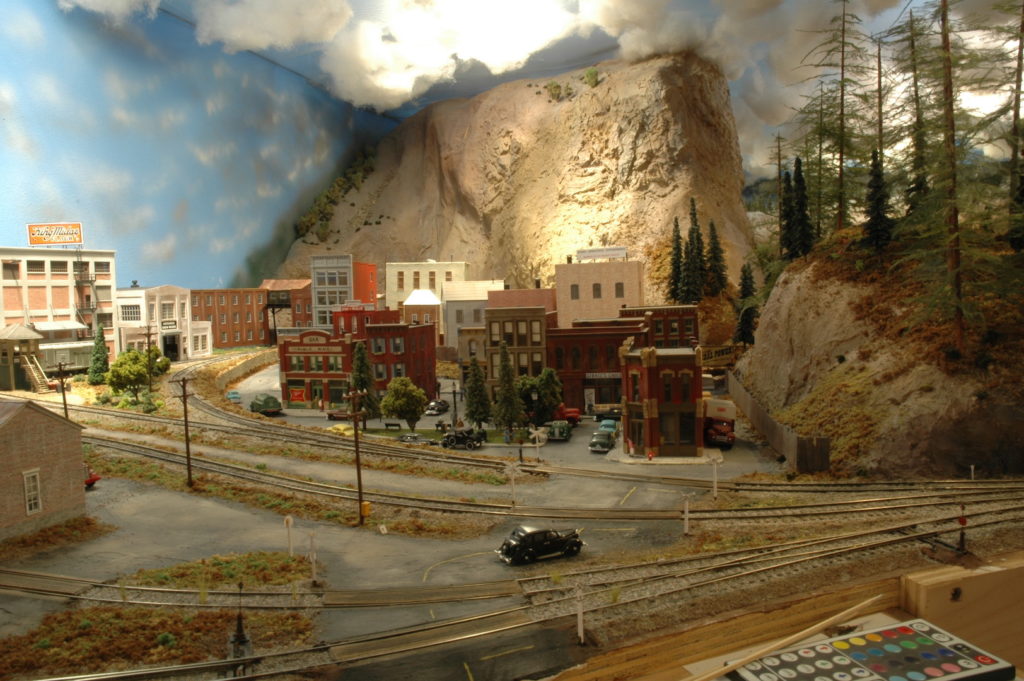
That is it for this installment. Next time we will look a little closer at Allentown. I hope everyone has a merry Christmas and a happy New Year.
David
December Mount Vernon Virtual Clinic
By Ted Becker
The December Mount Vernon Clinic will be held at 7:00 December 21, 2020 via Zoom. Meeting will open at 6:30.
The program this month is presented by Jim Betz.
Title: Skagit Valley Lines – Layout Tour/Progress Report
Description: This will be a layout tour/progress report about the new layout Jim Betz is building. It is a switching layout based upon the Great Northern in Skagit County in the years 1946-1955. The layout was started in February of 2020 and due to the use of extruded aluminum is already in the laying track and wiring phase.
Join Zoom Meeting:
https://zoom.us/j/93251294094?pwd=TkprZXZpRnFlMSt1ZWQvVXNsT21jZz09
Meeting ID: 932 5129 4094
Passcode: 870109
Hope you can join us.
Ted Becker
